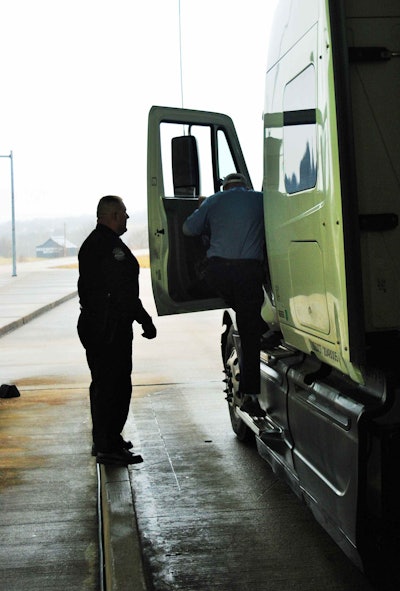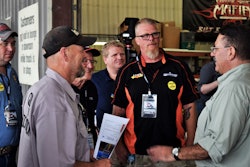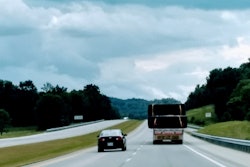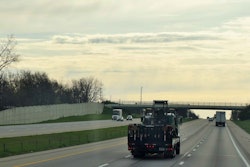
It hews closely to how Marks described it to me in April. Basically, as noted above, if granted the change would allow for any three-hour off-duty period to be used in tandem with a corresponding period of at least seven hours to make up the required 10 hours off-duty for the day. As noted in the petition, not only do its authors believe this type of accounting would make for better operational flexibility for long-distance haulers, it could in situations where scheduling pressures are high allow “professional drivers to account for the externally imposed scheduling demands [and] empower drivers to command their own schedule while still meeting customer demands, and maintain or even increase overall safety.”
You can read the group’s full petition, complete with two logbook examples that illustrate particular situations where the split sleeper is used in such a fashion, via this link.
The petition was sent officially to the agency in May, Marks says, and acknowledgment of its receipt came through this past week in a letter from Larry Minor, FMCSA’s associate administrator for policy. At once, the petition is not listed as yet on the page where FMCSA archives petitions it has received, a page that, for what it’s worth, doesn’t seem to have been updated in a while. (Its intro text mentions petitions active as of February 2016; OOIDA’s own petition to allow that three-hour pause button, later taken up legislatively, too, is not listed on the page, either.)

As is well-known, FMCSA seems to be slowly moving toward a potential change of the split-sleeper variety, allowing drivers more options to pause the 14-hour on-duty clock with mid-period rest, and has seemed so for quite some time, undertaking a study whose roots are way back in year 2014 that might serve as statistical underpinning for such a change in its hours of service rules (thus potentially avoiding lawsuits if they were to decide to make that change, though they’ll probably get them from so-called “safety advocacy” groups). I’ve heard recently that the split-sleeper study was finally out of the White House Office of Management and Budget, having received approval to proceed, and that the DOT is putting final touches on it — we can probably look to the Federal Register for final details on just how it will be conducted and on what timeline, but it could be a while.
Nontheless, for all the focus on hours, it’s the electronic logging device mandate rule that remains the focus of the ire for many owner-operators. We received a message from owner-operator Linda Tellstworth out of California, who wrote in responding to Max Heine’s Overdrive Extra blog post and June column on so-called “blockchain” technology, in which he wrote:
Many owner-operators who opposed e-logs later came to appreciate the relief from pressure to drive well over hours and fudge the logs, not to mention escaping the tedium of manual logging. Much of the remaining opposition is based on losing the productivity edge that came from minor fudging to grab a few extra miles and resolve the absurd technicalities of how the hours of service rule plays out in real life.
Many owner-ops came to see the hours of service themselves as the central issue, with lost time at docks contributing mightily to the problem (split sleeper flexibility might alleviate some of those problems, but not all). Tellstworth noted she was holding out not for hours change, necessarily, but for relief from the nickel-and-diming that continues for small operators, whose bedrock equipment and fuel costs continue on the rise.
Tellstworth runs with her authority, utilizing brokers, and she’s been behind the wheel for most of four decades. She believes that an ELD represents at best another cost to add to all the rest. “To put these logs in I have to buy the equipment, then hire someone at $165 an hour to put them in, then I have to pay a company $40 a month to monitor them.” Cost vary among ELD makers, some lower, but you get the point. Tellstworth continues, “A very costly bill along with all the other bills. … I am getting over cancer, so I haven’t worked in a couple years but am now ready to go back. To keep myself exempt from putting ELDs in, I will work only 8 days a month.”
She envisions an executive order from President Trump to exempt small operations (with 8 or fewer trucks, she says). There’s an exemption request still on the table from the Small Business in Transportation Coalition (comment period open through July 16 after an extension) for an exemption for carriers with 50 or fewer employees, but not exactly what Tellstworth describes. Nonetheless, she continues, until then she’ll haul part-time. “It’s costly to us, and people are leaving the trucking field because of all the regulations that are making it hard to make a living at it anymore. I am 60 years old and still at it, and I enjoy what I’m doing. … You want safer roads? Have the scale master check logs more often. Put professional drug testing labs on scales’ property. That will make roads safe.”
Not, she implies, electronic logging devices.









